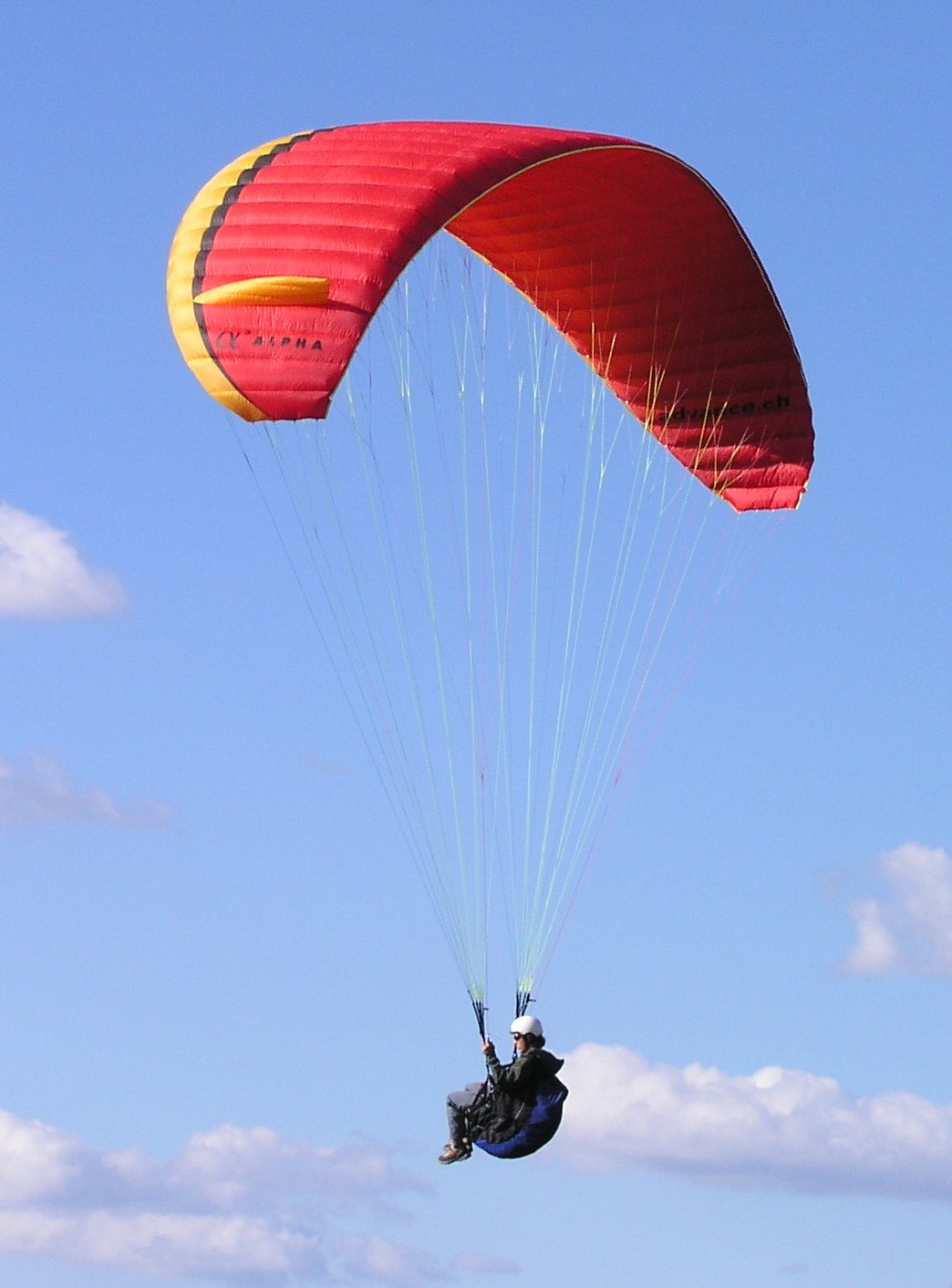
paragliding

paragliding

paragliding
Paragliding is a recreational and competitive flying sport. A paraglider is a free-flying, foot-launched aircraft. The pilot sits in a harness suspended below a fabric wing, whose shape is formed by its suspension lines and the pressure of air entering vents in the front of the wing.
Learning to fly
Most popular paragliding regions have a number of schools, generally registered with and/or organized by national associations. Certification systems vary widely between countries, though around 10 days instruction to basic certification is standard.
Flying above Stubaital, Austria
There are several key components to a paragliding pilot certification instruction program. Initial training for beginning pilots usually begins with some amount of ground school to discuss the basics, including elementary theories of flight as well as basic structure and operation of the paraglider.
Students then learn how to control the glider on the ground, practicing take-offs and controlling the wing 'overhead'. Low, gentle hills are next where students get their first short flights, flying at very low altitudes, to get used to the handling of the wing over varied terrain. Special winches can be used to tow the glider to low altitude in areas that have no hills readily available.
As their skills progress, students move on to steeper/higher hills (or higher winch tows), making longer flights, and learning to turn the glider, control the glider's speed, then moving on to 360° turns, spot landings, ‘big ears’ (used to increase the rate of descent for the paraglider), and other more advanced techniques. Training instructions are often provided to the student via radio, particularly during the first flights.
A third key component to a complete paragliding instructional program provides substantial background in the key areas of meteorology, aviation law, and general flight area etiquette.
Tandem paraglider launch
To give prospective pilots a chance to determine if they would like to proceed with a full pilot training program, most schools offer tandem flights, in which an experienced instructor pilots the paraglider with the prospective pilot as a passenger. Schools often offer pilot's families and friends the opportunity to fly tandem, and sometimes sell tandem pleasure flights at holiday resorts.
Most recognised courses lead to a national licence and an internationally recognised International Pilot Proficiency Information/Identification card. The IPPI specifies five stages of paragliding proficiency, from the entry level ParaPro 1 to the most advance stage 5.
Keine Kommentare:
Kommentar veröffentlichen